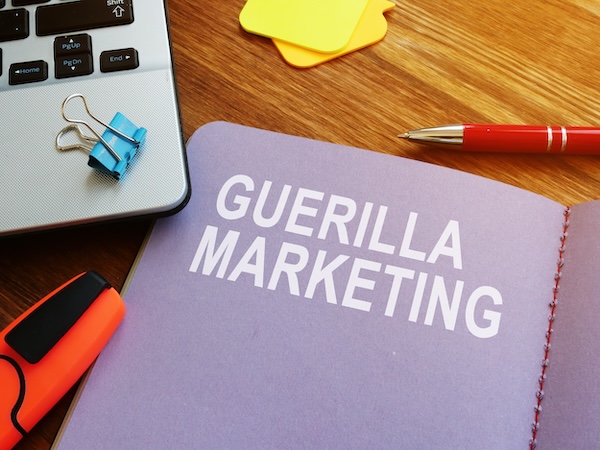Pay Per Click advertising (PPC) is one of the most accessible ways to begin advertising your website, its products and services. You can see PPC advertising by entering terms into any search engine – the sponsored ads at the top are PPC. PPC is the opposite of an ‘organic’ click through i.e. where your site has appeared at the top of a search listing as a result of the website content.
The PPC concept is very much what is says on the tin – you pay the search engine every time someone clicks on a link that leads them from the ad back to your website. However, it’s very easy to spend a lot of money on PPC advertising and, even if you increase your numbers of visitors, you may have nothing to show for it at the end. That said, it remains incredibly popular because when it works it really works, no matter what your business or the sector you’re operating in. If you want to grow your customer base and generate new leads at a relatively low cost then PPC is a highly effective way to do it.
When to consider PPC
If your PPC campaign is smooth running and is well designed then it can deliver return on the cost that you pay per click. So, for example, if you pay £2 for a click and that results in a £90 sale, PPC advertising is clearly worth the money. Research indicates that paid search ads are incredibly effective – in fact, people who search online click on search engine ads more than any other type of digital advertising. This would indicate that it is one form of advertising searchers don’t mind being presented with – or using – making it a good investment.
- PPC is fast – it can be a matter of minutes between opening an account and generating traffic.
- PPC is flexible – you can adjust your campaign to audience behaviour shifts and market changes as they happen, something that isn’t available to other types of advertising.
- PPC can be very cost effective – if you discover a keyword ‘niche’ with a cheap top bid then it can cost almost nothing to generate traffic for your site.
Google AdWords
While there are other forms of PPC advertising (and other search engines), Google AdWords is by far the most popular so we will focus on this as an example. So, how does it work?
- Users place a ‘bid’ on specific keywords i.e. how much they are willing to pay for a click on that keyword in their ad.
- When a search is made, Google goes into the selection of bidding AdWords advertisers and chooses a number of ‘winners’ whose adverts will appear in the search results.
- Being a ‘winner’ requires a combination of factors, including the size of the keyword bid, the ad text, as well as the relevance and quality of the keywords.
- Ad Rank also influences this process – this is a metric (i.e. a measurement) that takes into account Cost Per Click Bid (the highest amount an advertiser is willing to spend) and Quality Score (a value that takes into account your click-through rate, relevance, and landing page quality, among other factors).
The main advantage of this bid system is that you can set your budget for the amount that you want to spend on PPC. However, there are some things to bear in mind:
- It’s easy to get caught up in a bidding war over a particular keyword. This can be expensive.
- Bear in mind bid inflation – this consistently raises the cost of those words and phrases that are searched the most.
- Junk traffic can be a problem – PPC doesn’t make a distinction between a genuinely interested user clicking on an ad and one looking to spam.
- PPC doesn’t scale – your cost per click won’t drop the more traffic you achieve. It stays the same and the overall cost to you increases.
Beginning the campaign
These are the basic steps of establishing a PPC campaign:
- Determine your goal(s) – what are you aiming to achieve with this investment, sales, subscribers, brand awareness?
- Set a budget – what is your ideal budget and what is the absolute maximum?
- Keyword research
- Bid on the right keywords
- Use separate keywords for different ads if there are multiple keywords related to the PPC management project
- Think of an attention-grabbing headline – your ad needs to be visually compelling even if you get the keywords right
- Create ad copy with a clear call to action – why should someone click on your ad?
Finishing set up
After you’ve completed the basics of your PPC campaign set up there are a few additional steps you might want to take when completing the process.
Investigate your Quality Score. This is an overall rating from Google of your keywords, landing pages, and PPC campaigns. It is worth spending some time looking at the score you have and whether there is consistency between your PPC campaigns, keywords and website landing pages. Getting this right can be crucial as if you have a higher Quality Score it means you get more ad clicks at lower costs. You can access this via your AdWords account via Keywords – Customise – Show Quality Score.
Revamp your landing pages. Landing pages and PPC campaigns cannot, as mentioned, operate in ignorance of eachother. If one does not tie in with the other then any PPC spend can be a wasted resource. In general, landing pages should be well written with plenty of strong content that offers genuine value to visitors and has an impactful call to action. Subtly tailoring the pages to search queries is also essential.
Relevant keyword lists. We have already mentioned the importance of keyword research and ongoing reviews. Spending time creating relevant PPC keyword lists, tight keyword groups, and proper ad text ensures that investment in PPC campaigns is properly finished off.
Once a campaign is up and running you will need to keep an eye on it. Regular monitoring and activity are some of the best predictors of PPC success. Continue to optimise your PPC campaign using insights from Google Analytics (below) and by looking at what is working and what is not. Ongoing campaign optimising can include the following:
- Regularly review keywords – make sure that your PPC campaigns are using the best, most appropriate keywords and shed those that are expensive and under performing.
- Use negative keywords – these are important to reduce wasted spend.
- Use smaller Ad Groups – each campaign is made up of one or more ads that use the same keywords. If you split these up (for example into an individual product or service) you can create more relevant ad groups with more focused ad text and landing pages.
- Refine landing pages – don’t send all your traffic to the same landing pages and make sure landing page content aligns with your keyword research.
- Use Google Analytics reporting – keep an eye on what is working and where tweaks can be made.
Now you have the tracking and PPC activity set up, you now need to understand how to use reporting. Read our article on Getting the most out of your website reporting



